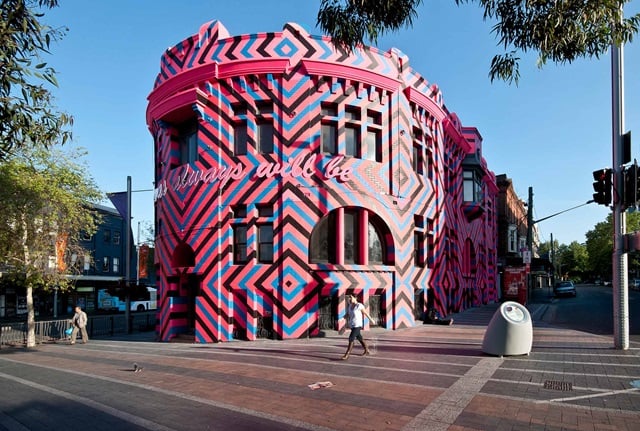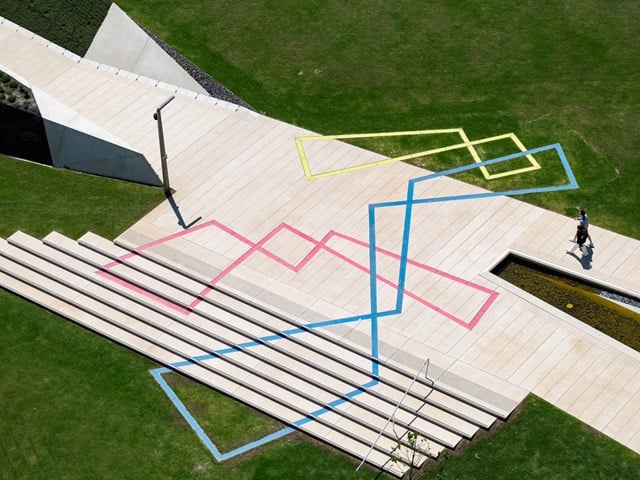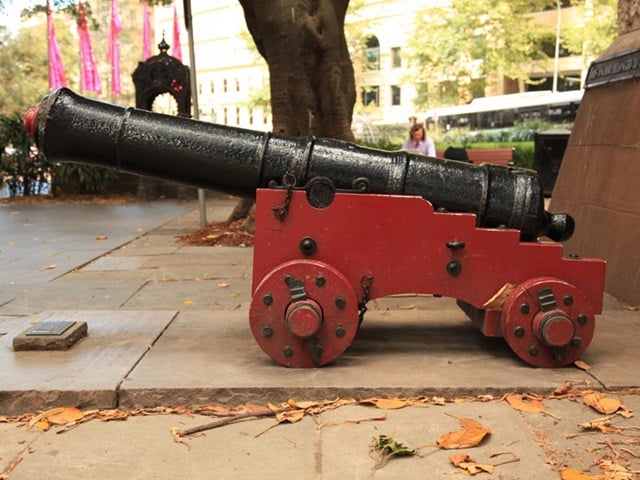


Honouring a pioneer of Australian primary industry.
Artwork description
Unveiled in 1961, the artwork consists of 3 sandstone figures, representing Earth, Water and Fire. The figures are flanked on the right hand side by a font, covered with ceramic tiles formed in pre-cast concrete. A spout of water rises centrally from this dish and falls from the rim into a gravel covered concrete basin.
In the words of a member of the Walker family, the 3 figures represent “the labours and beauty of pioneering mankind” depicted by water, fire, earth and a flanking font.
- Water – takes the form of a fisherman looking to the sea and new horizons
- Fire – a woman depicting intuition and protection of the fire of initiative and progress
- Earth – a farmer representing the pioneering efforts upon which this country has developed.
The fountain is around 4.6m high by 1.8m wide and 91cm deep. The saucer shaped font is around 3.7m in diameter and located 3.7m from the statues. The tiles that line the bowl were handmade by the sculptor, Gerard Havekes.
The fountain was intended to be a tribute to the memory of the late Frederic Joseph Walker and all those who pioneered primary industry in Australia. It's part of a long tradition of erecting private monuments by and for leaders in business. FJ Walker was a prominent entrepreneur and founder of the company that bears his name.
Artist
Gerard Havekes (1925-2011) was born in the Netherlands and arrived in Australia in 1950. He was a self-taught painter and sculptor.




